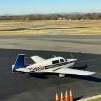Exhaust and Intake Leaks
-
Members Online
- AMG880
- Roseusaf
- exM20K
- Adam_StPete
- caractacuspdoom
- Lax291
- Jim Peace
- Wingover
- Martin S.
- jetdriven
- hypertech
- eman1200
- BrentS
- M20S Driver
- Kevin Hiller
- Tito22
- Greg Ellis
- Fly Boomer
- Tim Loftus
- FTN Aviation
- Guillaume
- IvanP
- varlajo
- mooneyflyfast
- ckb
- gwav8or
- Sabremech
- Frogman208
- Matthew P
- 47U
- hammdo
- Hank
- The Captain
- Scottknoll
- EKoS
- Ragsf15e
- rrodriguzzi1
- Paul Thomas
- MatthiasArnold
- dkkim73
- jeff.reynoljm


Recommended Posts
Join the conversation
You can post now and register later. If you have an account, sign in now to post with your account.